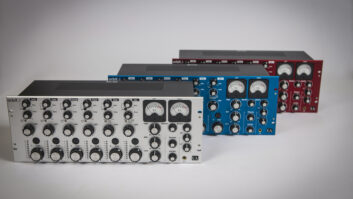
AV networking has come a long way since its infancy, having moved into the mature, stable phase of its lifecycle. While there are still valid use cases for connector-specific applications like HDMI and XLR, many products now eschew legacy-style connectors in favour of only featuring RJ-45 or USB-C. [Click here for more on USB-C.] While connecting devices to the network is increasingly approaching true “plug and play” functionality, there’s still a lot of planning and consideration needed to run AV over the network successfully.
NETWORK CHALLENGES
One of the biggest challenges of networking AV products is the large number of manufacturers and the myriad ways they implement networking. A classic fix for the interoperability challenge is the “walled garden” approach – a single-brand universe of products. The advantage of a walled garden is that the products work well together, like so many building blocks. But the disadvantage is that you’re limited to that one brand, and the manufacturer doesn’t have what you need or stop making something you like; then you’re stuck with few ways out unless you can buy a lot of hardware to try and break out of the walls.
Another potential fix for interoperability challenges is the establishment of standards. Standards create agreed-upon technology elements but don’t provide the implementation or support of the underlying technology. Any measure of quality is not inherent in the standard. Depending on how the standard is written, many leave the door open for enough interpretation to cause interoperability issues between manufacturers.
An alternate case for interoperability is having a third party develop a fully-supported holistic transport solution like Dante. The advantage is that if something goes wrong with the implementation, there’s a company that supports the platform, has a deep understanding of the technology, and wants to help integrators and manufacturers alike.
CONVERGED NETWORKS
The primary advantage of a converged network is everything runs over the same cable, and you can use fewer software/instances to manage the network. You plug in an endpoint – it doesn’t matter the nature of the endpoint – and instantly have access to whatever AV resources you need in addition to getting to files, messaging systems, etc – you have simultaneous access to all resources rather than having a machine that’s connected only to part of the network and can’t find or see the other parts.
Every network, converged or not, requires considerable planning to succeed. Designers need to draw out the system, note where the switches and the subnet boundaries are, and then consider how they’re going to manage multicast inside the areas of the network that are using an AV-over-IP system, ensuring there’s enough bandwidth in the trunks (switch to switch connections) to prevent a choke point from occurring. The trunk connections are 10Gb or faster in a typical bespoke design, while the downstream connections are 1Gb.
Converged networks are gaining popularity as AV devices behave more intrinsically like IT endpoints. However, creating a converged network and managing it effectively are two separate issues. More tools are available for AV network management – software that can manage the devices, monitor device security, provide remote access, and more. One of the biggest keys to the success of any sizeable converged network is how easy it is to manage, so take the time to choose wisely.







